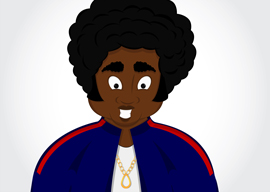
August 26, 2014

Source: Shutterstock
It’s a testament to the stifling conformity of the black community that pop subcultures such as whites (and certain nonwhites) conceive of them do not exist.
Think about it: except for Rastas, there are no African-American equivalents to the beatniks and goths, mods and rockers, skins and Teds, punks and new romantics, hippies and hipsters or (God help us) Juggalos.
Not only that, but very few blacks dare (or care) to venture into these mostly white subcultures. When they do”as punk pioneer of Jamaican descent Don Letts will frankly tell you“they are generally embraced by their new white friends and shunned by their old black ones. To cite the subculture I”m most familiar with, the total number of well-known black punks fits comfortably into, well, one 66-minute film. (Directed by a half-white guy.)
Imagine that the vast majority of white Americans of all ages and classes dressed as Teddy boys, that virtually the only music on the radio was rockabilly”and that this had been the case since 1958. Yet such an absurd scenario lines up perfectly with the creepily clone-like African-American culture of today. (Or should that be “Aspic-American”?)”¨
The mockumentary Fear of a Black Hat is 20 years old, but its supposedly fictional “rappers” wouldn”t look that out of place walking the streets of 2014 Toronto or New York City. At least the population of Pompeii has a decent excuse.
If “diversity” is the cardinal virtue of our time, how interesting that the “urban community” doesn”t display much of it. If Starkes is correct, that fact isn”t just a trivial quirk of fashion and faddery; the massive peer pressure to “keep it real” and not “act white” is self-imposed cultural captivity. On this plantation, blacks are the slave drivers as well as the slaves.